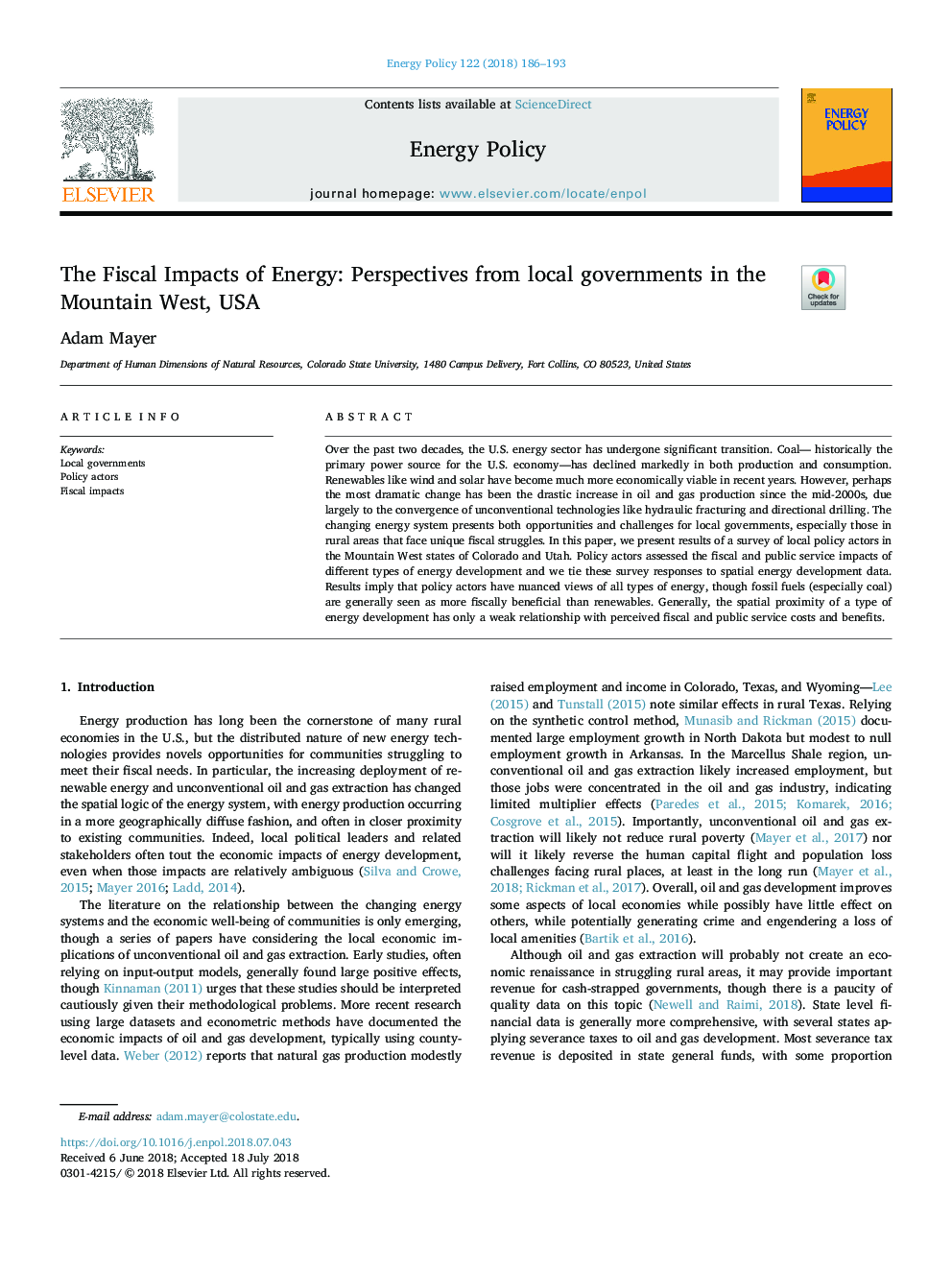| Article ID | Journal | Published Year | Pages | File Type |
|---|---|---|---|---|
| 7396583 | Energy Policy | 2018 | 8 Pages |
Abstract
Over the past two decades, the U.S. energy sector has undergone significant transition. Coal- historically the primary power source for the U.S. economy-has declined markedly in both production and consumption. Renewables like wind and solar have become much more economically viable in recent years. However, perhaps the most dramatic change has been the drastic increase in oil and gas production since the mid-2000s, due largely to the convergence of unconventional technologies like hydraulic fracturing and directional drilling. The changing energy system presents both opportunities and challenges for local governments, especially those in rural areas that face unique fiscal struggles. In this paper, we present results of a survey of local policy actors in the Mountain West states of Colorado and Utah. Policy actors assessed the fiscal and public service impacts of different types of energy development and we tie these survey responses to spatial energy development data. Results imply that policy actors have nuanced views of all types of energy, though fossil fuels (especially coal) are generally seen as more fiscally beneficial than renewables. Generally, the spatial proximity of a type of energy development has only a weak relationship with perceived fiscal and public service costs and benefits.
Keywords
Related Topics
Physical Sciences and Engineering
Energy
Energy Engineering and Power Technology
Authors
Adam Mayer,
